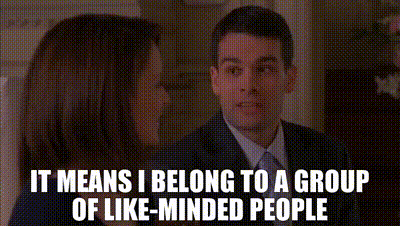The Invisible Walls of Culture
The true cost of diversity and how to manage it effectively.
There’s no shortage of advice on communication, feedback, and fostering team autonomy and ownership.
Take Kim Scott’s Radical Candor or any of Patty Azzarello’s books. These are great tomes with plenty of useful concepts. But all of them have a bias—a tilt towards US-centric management and culture.
If you go outside the US to European or Asian IT hubs, you’d be shocked at how misleading this advice can be.
Having had the privilege to work in mono-cultural environments from Azerbaijan and India to Estonia, I’ve seen how diversity can change teams both for the good and for the worse (if left unmanaged).
Invisible walls of culture are always there. If you notice them and pay your respects, it will accelerate your career. On the flipside, if you ignore those walls, it can hinder your growth without you understanding why.
Erin Meyer’s The Culture Map provides an excellent framework for understanding these dynamics. You might be thinking—what’s the value add of this article?
Here, I’ve distilled Meyer’s core principles and paired them with real case studies and actionable tactics from my own experience.
Consider this a “Culture Map’s” tactical playbook tailored for product managers and leaders alike.
Today’s Article
Cultural landscapes. Differences and what to expect in different IT hubs all around the world.
🔒 The true cost of diversity. Cultural kingdoms. Misaligned comms. Why hiring from mono-cultures is a risk.
🔒 Making diversity effective. How to build effective rituals to align teams from diverse cultures.
📝 Word count: 2563 words
⏱️ Reading time: ~20 minutes
🗺️ Cultural Landscapes
Cultures differ a lot, but when it comes to real-world office settings, three key things stand out—level of context, attitude towards hierarchy, and level of risk tolerance.
Low vs. high context
The lower the level of context, the more transparent the communication is. The low-context cultures say exactly what they mean. There’s no need to read between the lines. Such cultures tend to be more candid and share critical feedback openly.
If a manager bluntly says, “What is this crap?”, most people won’t be offended.
The higher the context, the more meaning is conveyed between the lines. Communication becomes less direct and more nuanced. A critique can be wrapped in layers of polite wording. An inexperienced Westerner might consider this to be a praise, completely missing the point.
If you travel from the US (lowest level of context) to the EU (mid-level) or East and Asia (highest), you’ll notice a stark difference in communication between those hubs.
Attitude towards hierarchy
Attitude towards hierarchy is vastly different between cultures. While the US and Western Europe tend to be more open to flat structures and meritocracy, the further East you go, the more top-down the management becomes. Eastern and Asian cultures are top-down to the point where it’s against the norms to question your superior’s decision.
Most Westerners misread these nuances. When they don’t agree, they try to push back and reason (as they’re used to). This can provoke a polite affirmative nod from their boss, which is interpreted as “I agree with you”. In reality, the boss probably doesn’t agree and will come back with the same request later. Compliance is considered a virtue by Eastern standards.
Another interesting bit is attitude towards superiors. In the West, you’re likely to see a CEO take public transport to work and sit in the open space alongside the rest of the team.
The further East you go, the more differentiation between hierarchy levels matters. C-level execs might have their own flashy offices, assistants, and other signs of distinction. Teams reporting to such managers respect that and view it as a benchmark to strive for. Try to act the opposite and you can lose trust and efficiency from your team.
There’a notable book, Turn This Ship Around, by David Marquet about how important it is to grow autonomy and challenge top-down tendencies. Well, you can throw it out the window in the East and Asia. Good luck with changing hundreds of years of cultural wiring.
In Rome you have to eat like the Romans
Risk tolerance
Tolerance towards risk is a big differentiator between cultures. Western cultures have higher risk tolerance and are more open to ambiguity. Eastern cultures are way more sensitive to ambiguity.
For instance, at Bolt each business line had a P&L. Typically it was a spreadsheet that was sufficient to be operational, but by far not complete in terms of accounting.
I was surprised to find an extremely well-detailed budget and growth plan when I joined Umico. It was unlike anything I’ve seen before in terms of fidelity. Buyers, retention, marketing costs, and how it all maps to the topline and bottomline—the whole orchestration was there. As the saying goes - “if you can measure, you can manage it”. I’d add, if you can manage it, it becomes less of a risk.
This sensitivity to risk also translates into how much formality you will face. In Western cultures, sometimes a direction is enough for the team to start executing. Eastern companies, on the other hand, expect precise detailing of goals, scope, and documented code of conduct for teams. For a manager with a Western mindset, that might seem strange and excessive.
The Playbook
Western cultures:
Low-context communication (say exactly what you mean);
Attitude towards hierarchy (flat, meritocratic, hybrid);
Mid-high risk tolerance.
Eastern cultures:
High context communication (veiled meaning behind the lines);
Top-down management;
Low risk tolerance.
💰 The True Cost of Diversity
In many global organizations diversity is perceived as a must.
The more diverse the cultures in our teams, the more different perspectives we can bring to the table, the better the quality of the product e.t.c.
But to every upside, there’s a hidden cost. If not managed correctly, it can backfire heavily.
Cultural clusters
The most efficient, cohesive teams are mono-cultural - but they also produce the least innovation and stick to tried-and-true playbooks.
When we started building Rentals at Bolt five years ago, our team was 90% Eastern European. Boy, we were fast - launching new products in months, shipping new features biweekly, and running non-stop AB-tests.
But there was a dark side: we formed a cultural cluster. People from the same background naturally gravitate toward one another, and clusters can become top-down, ignoring or excluding those from different cultures. That hurts team cohesion.
Diversity breaks up these clusters, challenges the status quo, and fosters openness to new perspectives.
So make conscious hiring decisions. Over-hiring from a single culture creates a cluster. That might be fine for a small, local company—but on a global scale, it can backfire.
For instance, at Bolt we started hiring like crazy from India. A great country with immense supply of fantastic talent. But if India becomes your core talent supplier, you’ll create a cultural cluster. That’s what happened.
One morning at our Tallinn HQ, I went to pour a cup of coffee and found myself circling between—and queuing behind—multiple Indian clusters, each speaking a different dialect.
Misaligned comms
Imagine a setting where you have Korean, Estonian, Indonesian, and Italian colleagues in the same meeting.
Then an Estonian manager comes in, reads the document, and challenges the team, saying, “What is this nonsense?”
Korean and Indonesian employees would be deeply offended and might perceive this as a “loss of face.” Their competence and integrity would be challenged, causing a dip in their long-term motivation.
The Estonian employee will treat this as an opportunity to learn and as fair, critical feedback.
The Italian employee would view it as harsh feedback and might become defensive. It won’t be the end of the world, though; she will recover in a few hours and forget about the incident.
This is what happens in diverse teams. When communication styles clash, it can easily spiral into disaster.
The more diverse the team, the more urgently specific rules for communication are needed within groups.









